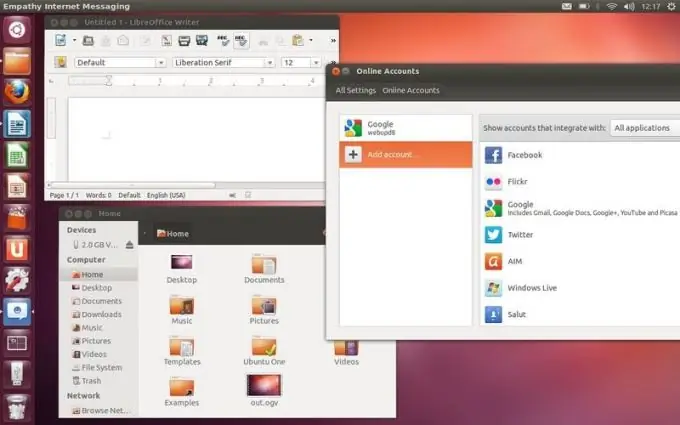Everyone has their own reasons for switching to Ubuntu. Someone is tired of viruses and age-old "brakes" when working with "Windows". Others are driven by curiosity. Still others are attracted by open source code, which gives freedom of action and full control over the system.
Whatever your reason, in order for the transition to "Ubuntu" to be painless and not lead to disappointment, you need to prepare for it and get serious about the process of installing and configuring a new system.

Necessary
- - computer;
- - access to the Internet;
- - USB storage.
Instructions
Step 1
Analyze what programs you use on your computer. Check if there is an equivalent for Ubuntu. If there are no applications that are really important for you, do not rush to abandon the planned transition. Ubuntu has the ability to run Windows programs. You can also install "Ubuntu" in parallel with the system on your computer now.
Step 2
Check the settings for your computer. The architecture of the processor and the amount of installed RAM. "Ubuntu" is not very resource-demanding, it is more necessary for choosing the right distribution kit.
Step 3
Download the operating system image from the official website using the information from the previous step. If you have a new computer with a 64-bit processor, choose the appropriate distribution. If you want to breathe life into a battered laptop or an "ancient computer", download "Ubuntu" 32 bit.
Step 4
Prepare a flash drive with a capacity of 2 GB or more. Using one of the programs for creating bootable media ("Unetbootin" or "LiLi USB Creator"), write the system image to it, following the instructions of the program.
Step 5
Enter BIOS and set the boot mode from USB-disk. Reboot the computer with the USB stick inserted and wait until the Ubuntu desktop is fully loaded. You can start exploring the new system. If everything suits you, you can proceed to the installation by clicking on the "Install Ubuntu" icon on your desktop.
Step 6
Select a language from the list of suggested ones. Connect to an available network to install the required updates. Choose the installation method: clean install "Ubuntu" or install alongside "Windows". Next, you will be prompted to partition the disk space. Trust the system for the first time, with the gain of experience you will be able to do the markup at your discretion.
Step 7
Watch a slideshow of the system's capabilities while the installer is running. Fill in the "computer name" and "username" fields. Come up with a strong password and choose a login method. Wait until the end of the installation process and restart the computer, setting the BIOS to boot from the hard disk.
Step 8
Select “Ubuntu” from the list of installed systems if you installed it alongside “Windows”. Start customizing the new system for yourself. Ubuntu already has a set of programs most necessary for a computer user, the rest can be installed in the application store, literally in a couple of clicks. Yes, now you do not need to surf the Internet in search of the desired program. No need to install drivers (except for some video cards). You can also forget about antivirus software. At the very least, it's already worth the upgrade to Ubuntu.






